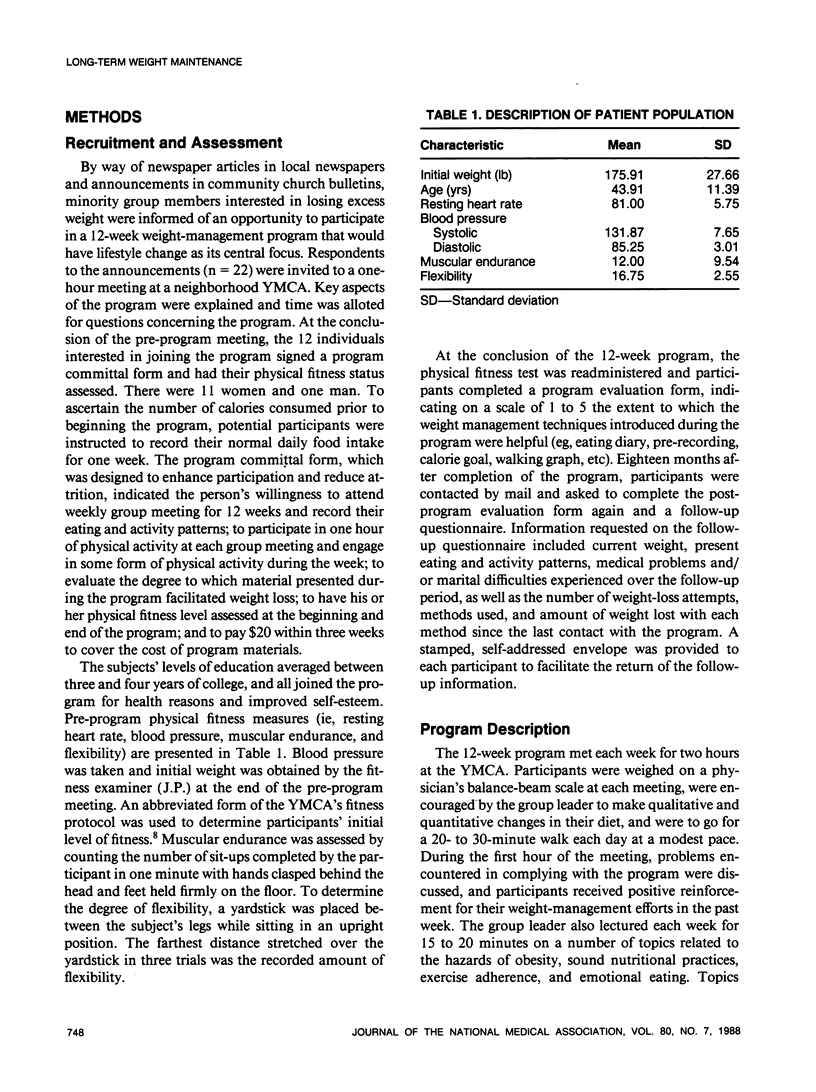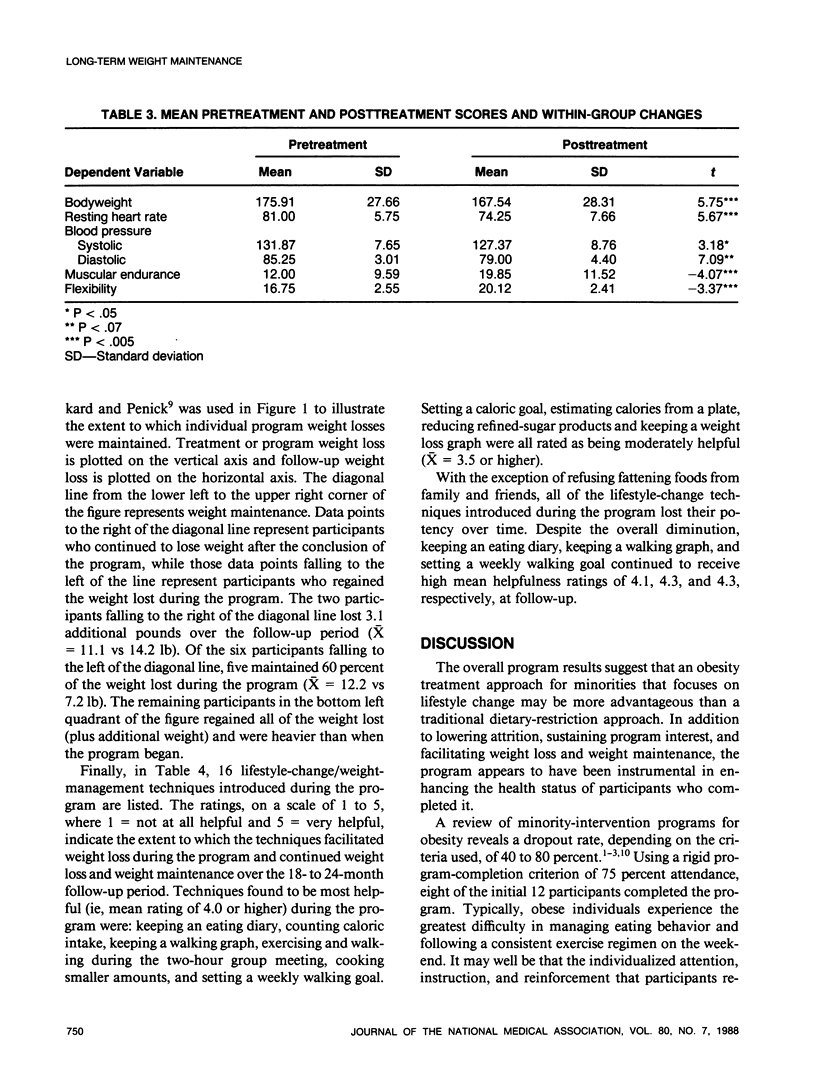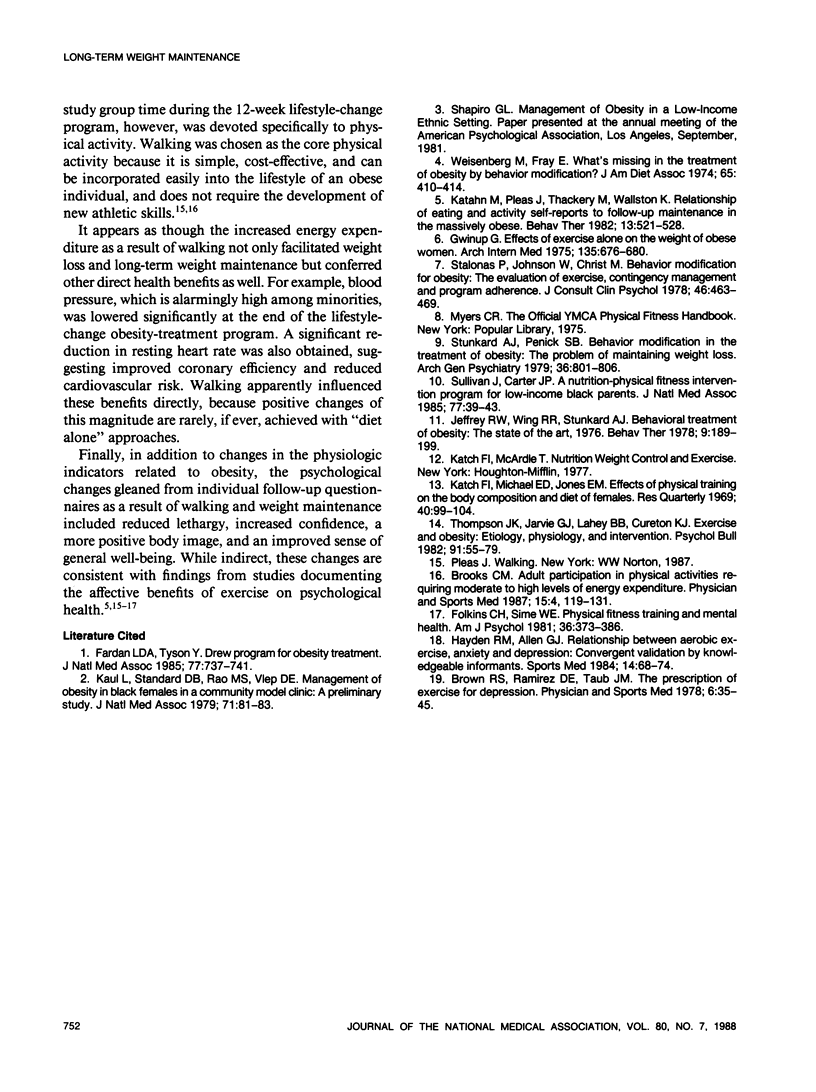Abstract
Obesity and a sedentary lifestyle places Americans in general, and minorities in particular, at risk for a number of chronic health problems: cardiovascular and cerebrovascular disease, diabetes, and hypertension, to name a few. It is therefore concluded that walking or other energy-expending activities and a sensible diet are not only an efficient weight-loss approach, but the most effective long-term weight maintenance approach available to date. Moreover, the potential for enhanced psychological well-being, increased health benefits, and reduced risk factors is also far greater with diet and exercise than with diet alone.
Practitioners concerned with improving the overall health status of obese minorities would be well advised to remember that dieting is a depriving experience, while walking and other aerobic activities can be an exhilarating experience that gives the obese individual another degree of freedom.
Full text
PDF





Selected References
These references are in PubMed. This may not be the complete list of references from this article.
- Fardan L. D., Tyson Y. Drew program for obesity treatment. J Natl Med Assoc. 1985 Sep;77(9):737–741. [PMC free article] [PubMed] [Google Scholar]
- Folkins C. H., Sime W. E. Physical fitness training and mental health. Am Psychol. 1981 Apr;36(4):373–389. doi: 10.1037//0003-066x.36.4.373. [DOI] [PubMed] [Google Scholar]
- Gwinup G. Effect of exercise alone on the weight of obese women. Arch Intern Med. 1975 May;135(5):676–680. [PubMed] [Google Scholar]
- Hayden R. M., Allen G. J. Relationship between aerobic exercise, anxiety, and depression: convergent validation by knowledgeable informants. J Sports Med Phys Fitness. 1984 Mar;24(1):69–74. [PubMed] [Google Scholar]
- Katch F. I., Michael E. D., Jr, Jones E. M. Effects of physical training on the body composition add diet of females. Res Q. 1969 Mar;40(1):99–104. [PubMed] [Google Scholar]
- Kaul L., Standard D. B., Rao M. S., Ulep D. E. Management of obesity in black females in a community model clinic: A preliminary study. J Natl Med Assoc. 1979 Jan;71(1):81–83. [PMC free article] [PubMed] [Google Scholar]
- Stalonas P. M., Jr, Johnson W. G., Christ M. Behavior modification for obesity: the evaluation of exercise, contingency management, and program adherence. J Consult Clin Psychol. 1978 Jun;46(3):463–469. doi: 10.1037//0022-006x.46.3.463. [DOI] [PubMed] [Google Scholar]
- Stunkard A. J., Penick S. B. Behavior modification in the treatment of obesity. The problem of maintaining weight loss. Arch Gen Psychiatry. 1979 Jul;36(7):801–806. doi: 10.1001/archpsyc.1979.01780070079009. [DOI] [PubMed] [Google Scholar]
- Sullivan J., Carter J. P. A nutrition-physical fitness intervention program for low-income black parents. J Natl Med Assoc. 1985 Jan;77(1):39–43. [PMC free article] [PubMed] [Google Scholar]
- Thompson J. K., Jarvie G. J., Lahey B. B., Cureton K. J. Exercise and obesity: etiology, physiology, and intervention. Psychol Bull. 1982 Jan;91(1):55–79. [PubMed] [Google Scholar]
- Weisenberg M., Fray E. What's missing in the treatment of obesity by behavior modification? J Am Diet Assoc. 1974 Oct;65(4):410–414. [PubMed] [Google Scholar]


